Field day: art and architecture collide at Albion Barn in Oxfordshire

The verdant location of our July issue fashion shoot – photographed by Jeff Boudreau and styled by Harry Lambert – is Albion Barn, the Oxfordshire home and gallery space of art dealer Michael Hue-Williams.
The 50 acre farming estate in Little Milton has been in Hue-Williams’ family ‘forever’. He grew up there, and now works between the estate and London. In 2013, he commissioned architect Christina Seilern of Studio Seilern Architects, an old friend who he met while she was working for Rafael Viñoly, to renovate the 17th-century farmhouse complex into a home for his family, and for his art collection.
Hue-Williams opened his first gallery with an exhibition of Max Ernst, in partnership with Claus Runkel in 1988, designed by the future architectural stars Claudio Silvestrin and John Pawson. The latter went on to design two more galleries for Hue-Williams until Albion Barn was built for him by Foster + Partners in 2004.
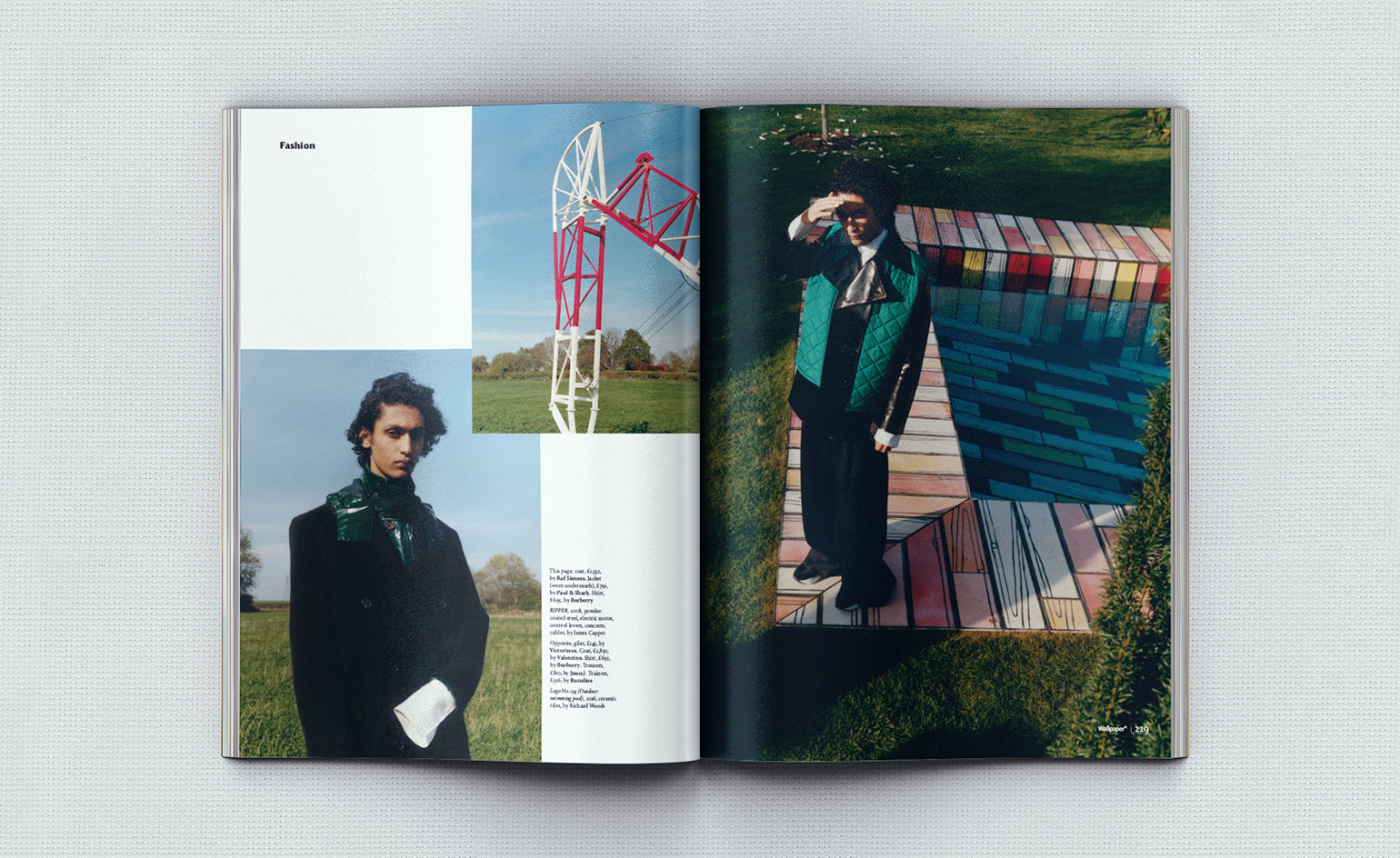
Model Sami Younes with RIPPER, 2008, by James Capper (left) and Logo No. 134 (Outdoor swimming pool), 2016, by Richard Woods. See the full shoot here
He chose to redesign Albion Barn because he was looking for a more domestic and intimate setting to show his collection. ‘[Christina] knew the barn – I’ve known her for 25 years now, and I was just really interested to do something new and put a different spin on it,’ Hue-Williams notes.
Seilern converted the main barn into an exhibition space, divided into smaller adaptable sections such as a dining room and kitchen for entertaining, and a library, which is at the heart of the design. ‘The Albion Barn gave us an interesting opportunity to play with what a central space can do to the overall flow of the circulation. The library that morphs and changes with secret doors can connect and separate the gallery spaces as well as turning the library into an introverted space or a circulation route,’ says Seilern.
Yet, the art collection continues beyond the walls of the barn into what Hue-Williams describes as his ‘green gallery’, the grounds and countryside surrounding Albion Barn which has become a sculpture park including works by Bernar Venet, Vito Acconci and James Capper amongst others.
Hue-Williams has been slowly accumulating and increasing the sculptures, and his ambition it seems – he is working on planning permission for a small bridge and island that will house a pavilion designed by architect David Adjaye – Hue-Williams has worked with Adjaye on projects from Munich to Chicago and the architect is currently working on redesigning his home in London.
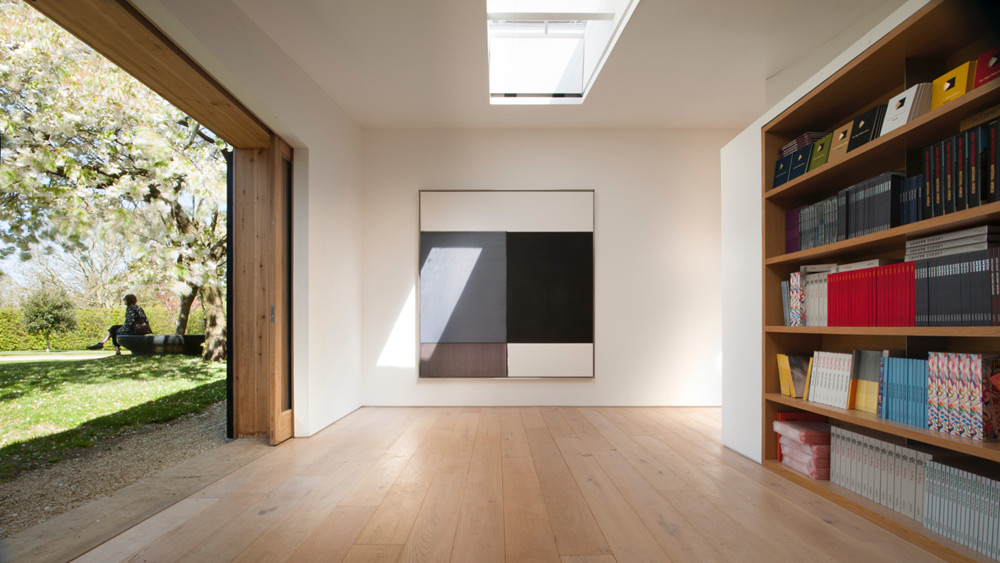
Albion Barn was designed by Studio Seilern Architects
It is refreshing to see new works by emerging artist James Capper sitting alongside established names such as Bernar Venet and James Turrell. ‘I have known about him for a while,’ says Hue-Williams of Capper. ‘He is a remarkable sculptor and I wanted to present both ends of the contemporary spectrum, to do something new where people wouldn’t know the work so it could be an educational process. Some people do find the work hard to grasp.’ Hue-Williams is now working on a larger project by Capper – a touring, 60ft long, mechanical tug boat installation – with gallerist Hannah Barry, who represents Capper in London.
He is also working on international projects with artist Richard Woods, who designed the site-specific pool installation, seen in the W* fashion shoot. ‘I’ve worked with Richard a lot in the past and in fact was urged on by my wife Ali, who said we should do an artists project with him,’ says Hue-Williams. The coloured ceramic tiles of Woods’ work seemingly transform the pool into a punchy comic book-style illustration.
The gallery will soon host an exhibition of paintings by John Virtue opening on 1 July.
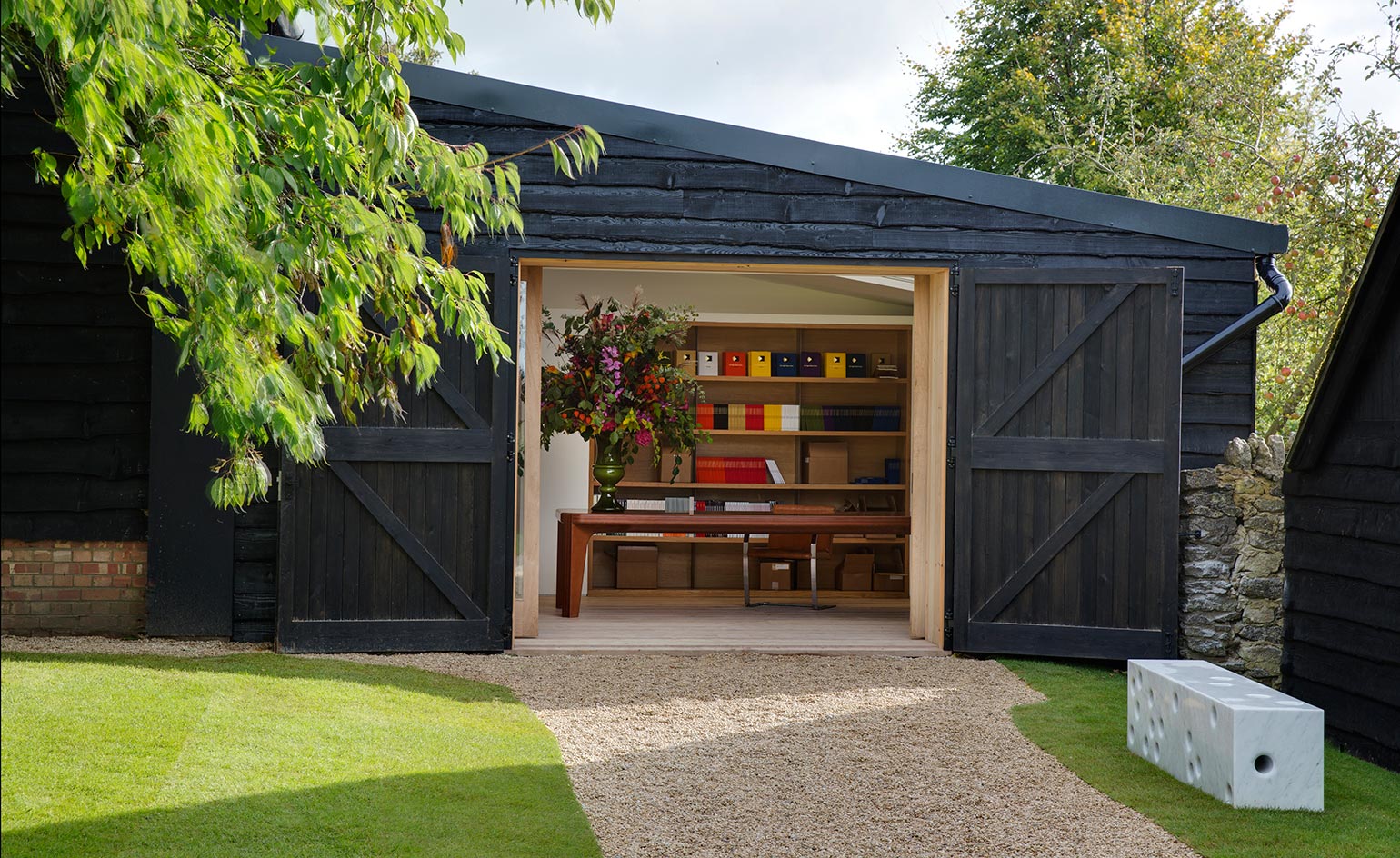
Western Façade, 2012, Carrara marble, by Barber Osgerby
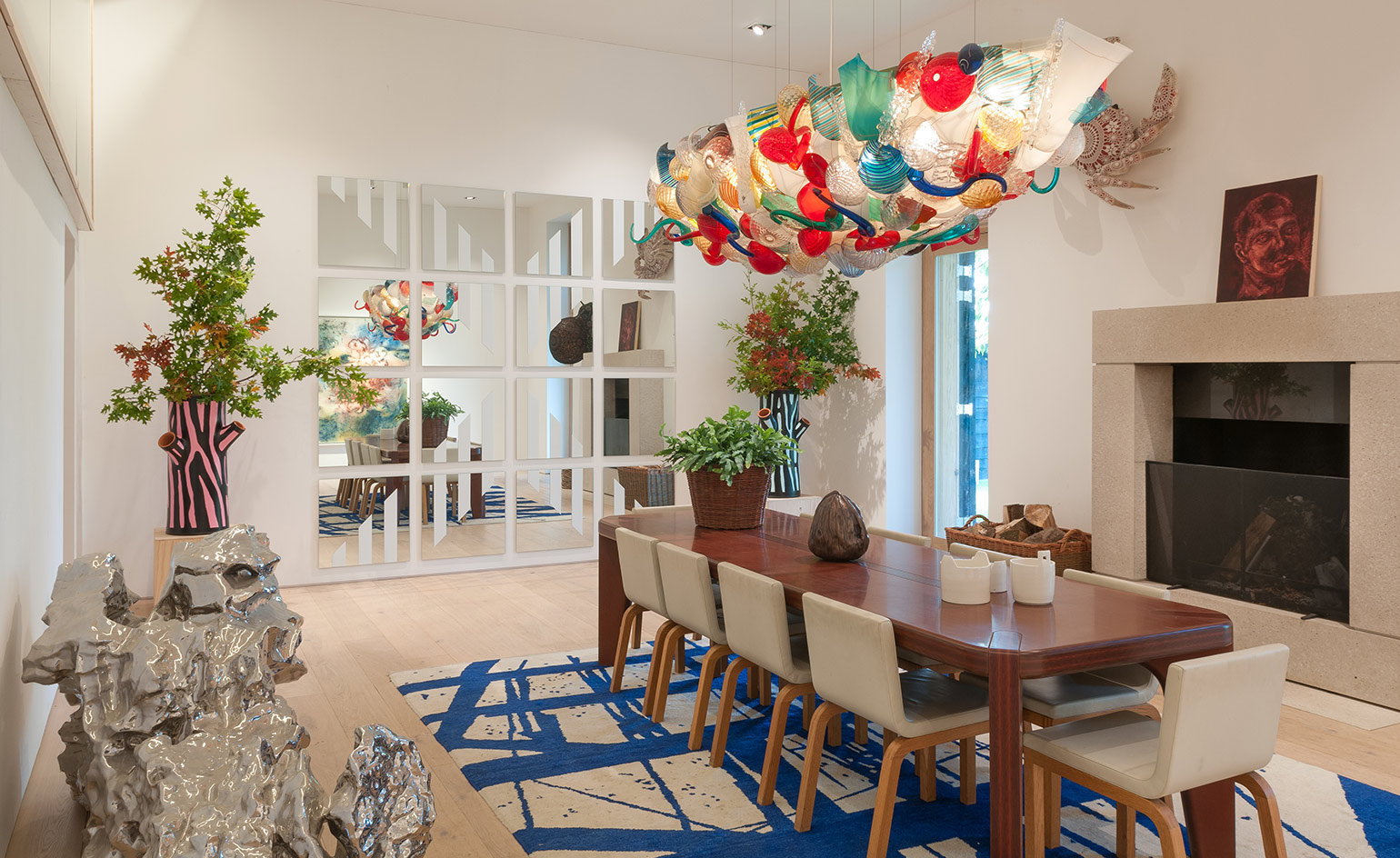
The dining room at Albion Barn
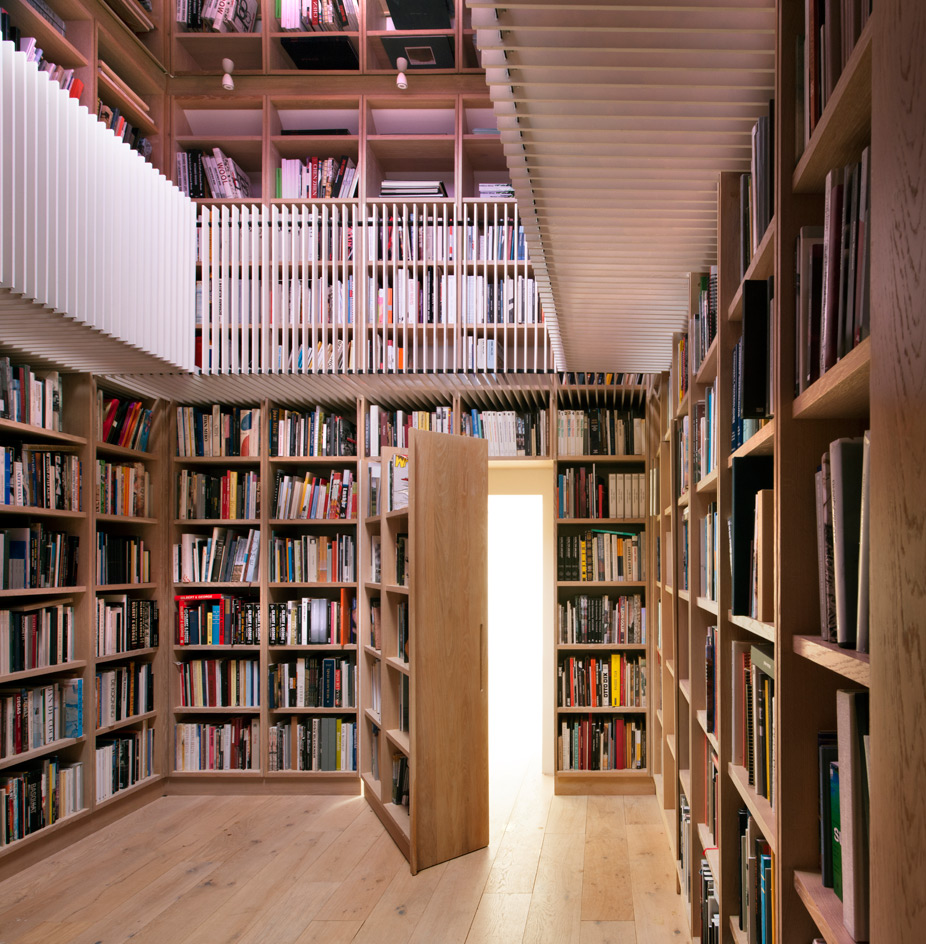
The central and adpatable library space at Albion Barn was designed by Studio Seilern Architects.
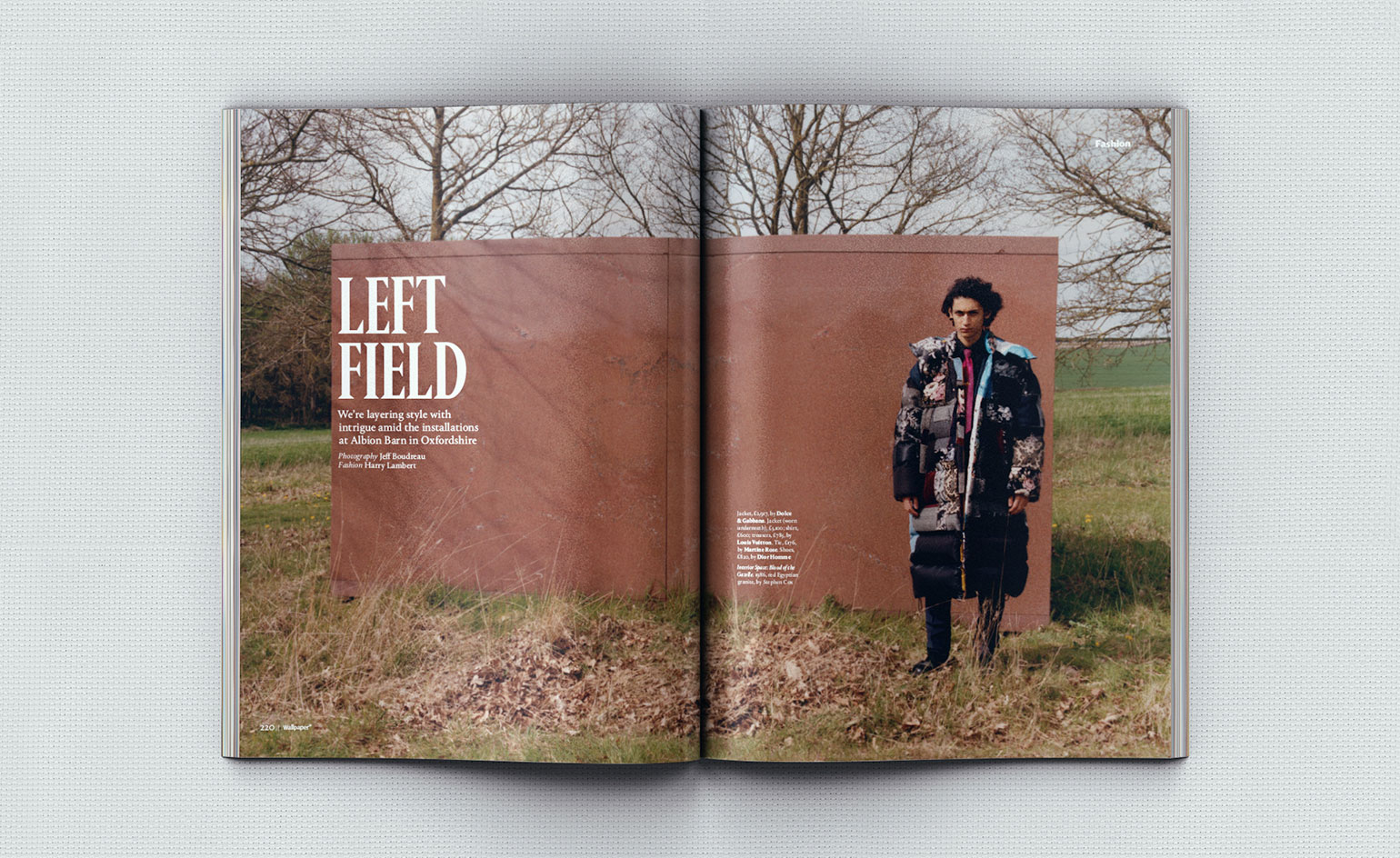
For our July 2017 issue Left Field menswear shoot, the W* fashion team camped out at Albion Barn in the Cotswold’s among artworks
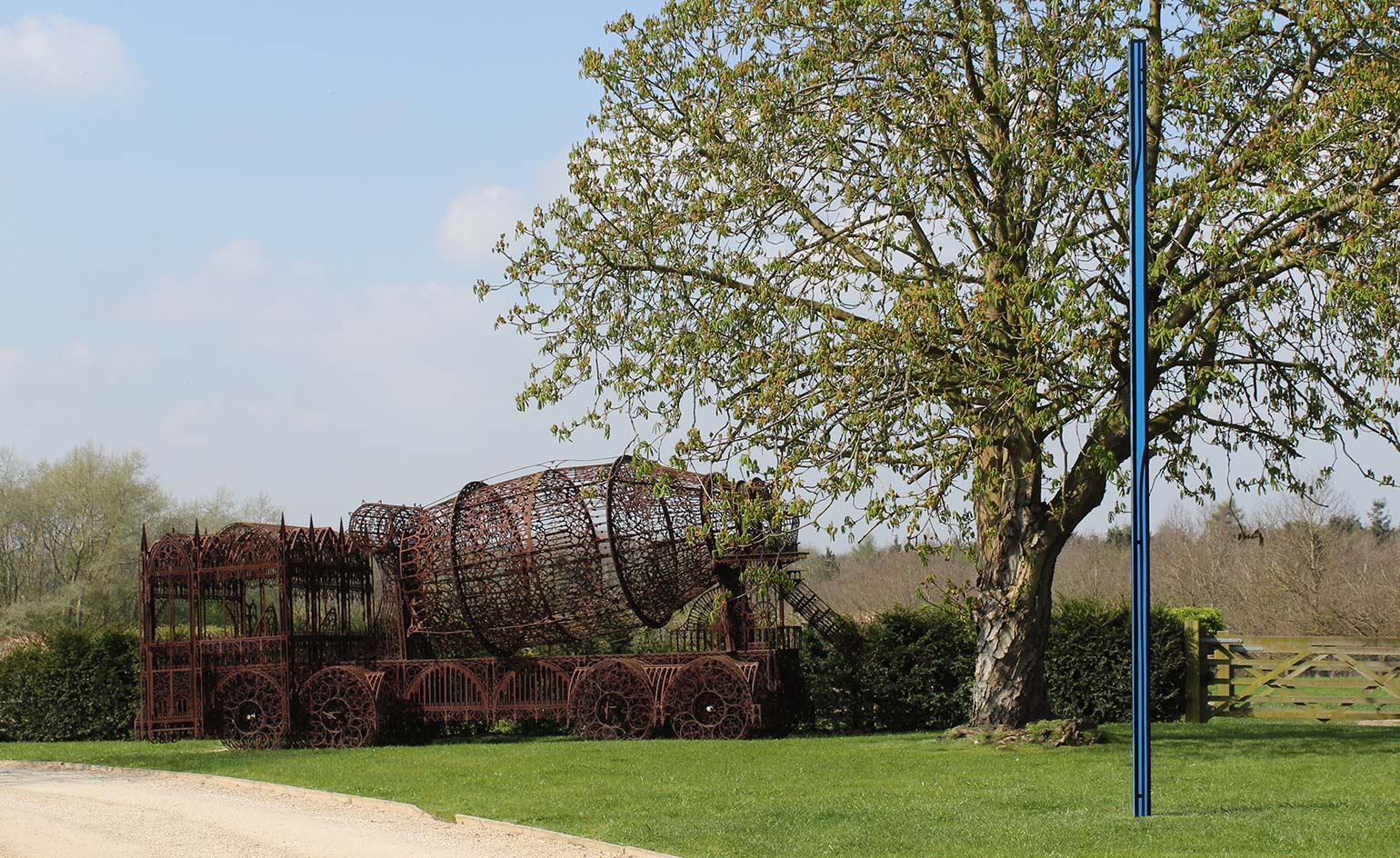
The 50 acre estate at the Albion Barn is a ‘green gallery’ for the art collection of Michael Hue-Williams. Pictured, Cement Truck, 2008, by Wim Delvoye, and Standing Timber (ML), 2017, by Richard Woods

Model Sami Younes with Standing Timber (ML), 2017, by Richard Woods (left), and Arc, 2014, by Bernar Venet

Arc, 2014, Cor-ten steel, by Bernar Venet
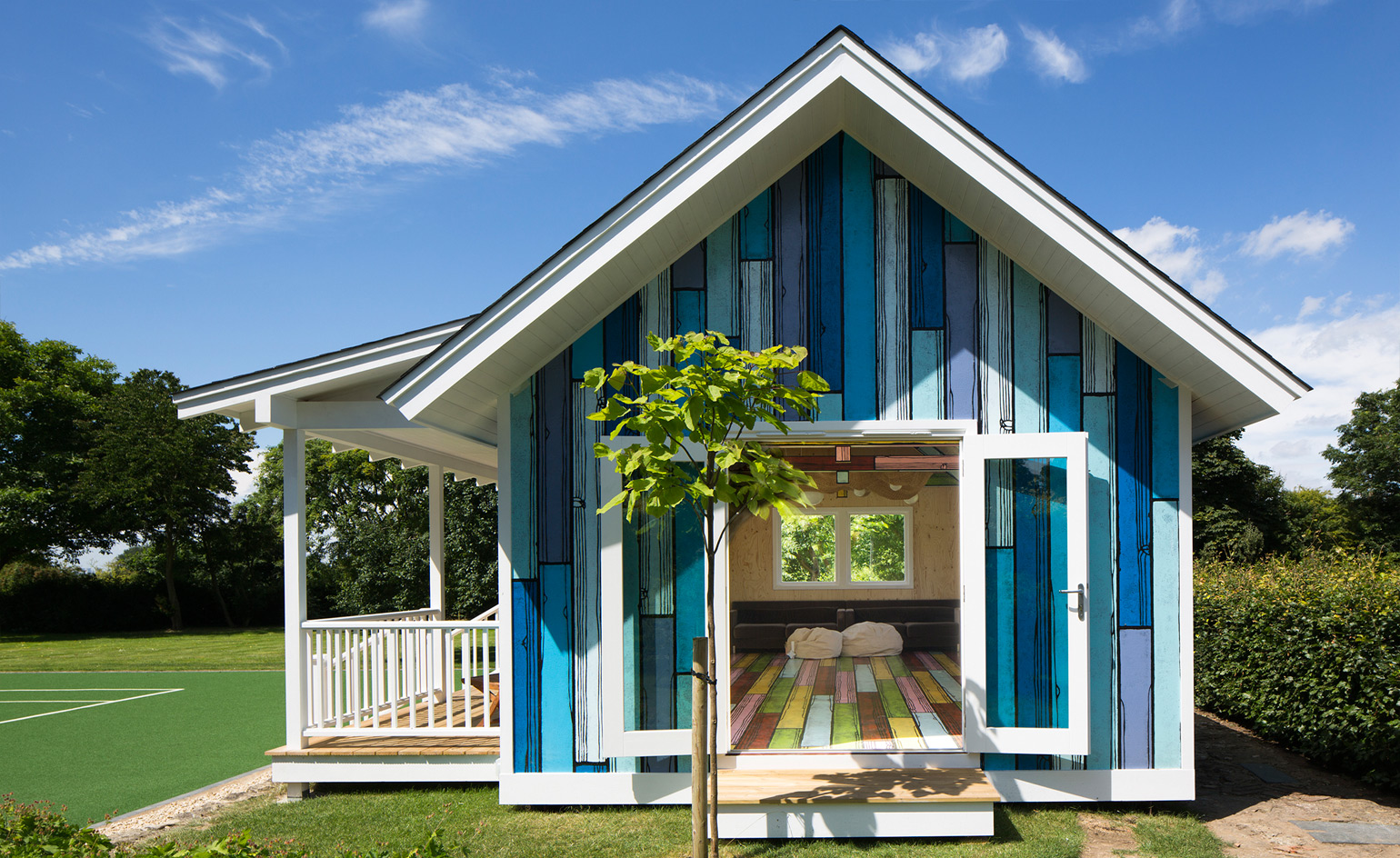
Hue-Williams’ tennis pavilion is also a work of site-specific art by Richard Woods, titled Pavilion (ML), 2014, acrylic on plywood

Skyspace, by James Turrell
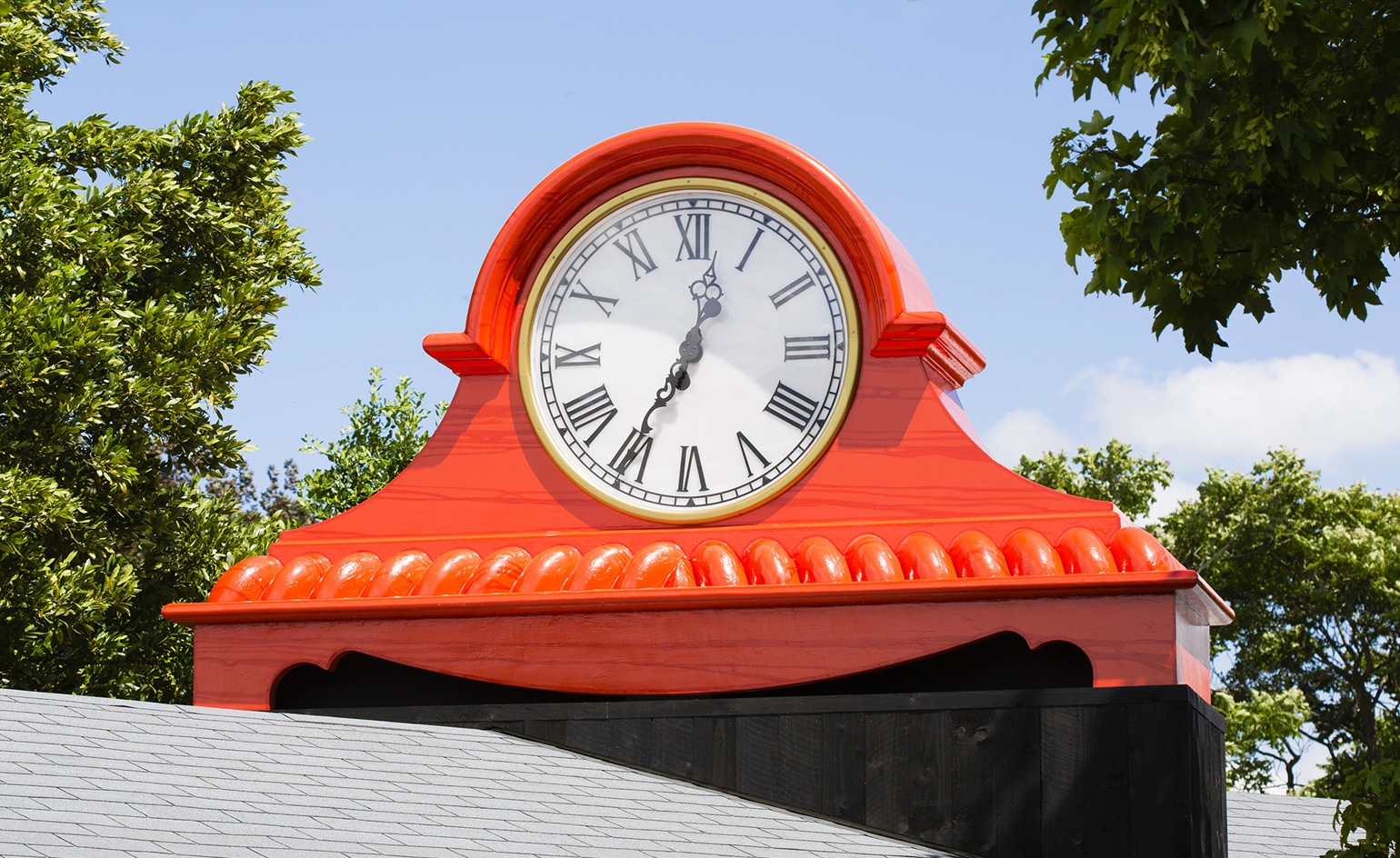
Old Time, 2014, fibreglass, by Richard Woods
INFORMATION
For more information, visit the Albion Barn website and the Studio Seilern Architects website
Receive our daily digest of inspiration, escapism and design stories from around the world direct to your inbox.
Harriet Thorpe is a writer, journalist and editor covering architecture, design and culture, with particular interest in sustainability, 20th-century architecture and community. After studying History of Art at the School of Oriental and African Studies (SOAS) and Journalism at City University in London, she developed her interest in architecture working at Wallpaper* magazine and today contributes to Wallpaper*, The World of Interiors and Icon magazine, amongst other titles. She is author of The Sustainable City (2022, Hoxton Mini Press), a book about sustainable architecture in London, and the Modern Cambridge Map (2023, Blue Crow Media), a map of 20th-century architecture in Cambridge, the city where she grew up.
-
 Everything to look forward to in fashion in 2026, from (even more) debuts to the biggest-ever Met Gala
Everything to look forward to in fashion in 2026, from (even more) debuts to the biggest-ever Met GalaWallpaper* looks forward to the next 12 months in fashion, which will see the dust begin to settle after a year of seismic change in 2025
-
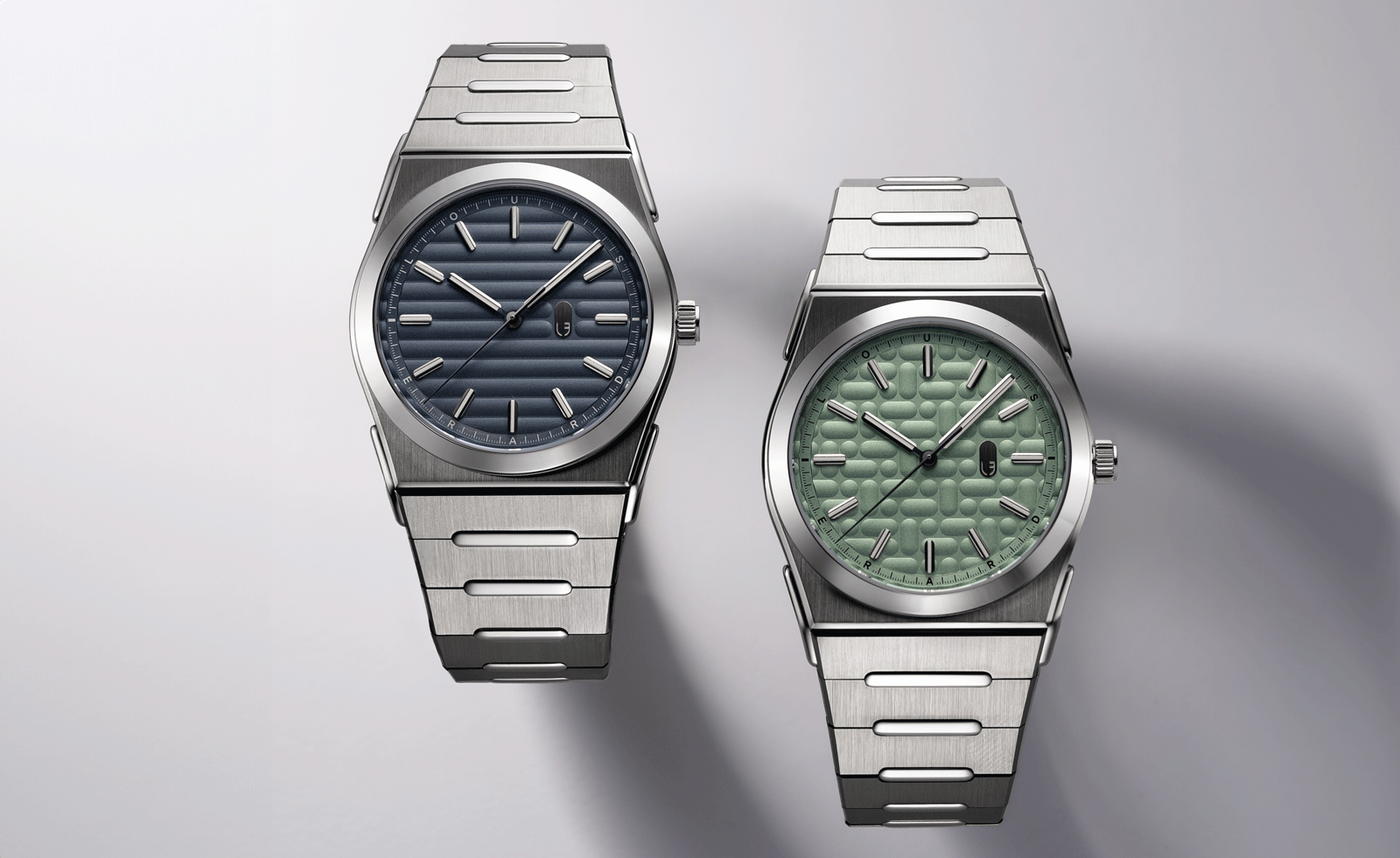 Five watch trends to look out for in 2026
Five watch trends to look out for in 2026From dial art to future-proofed 3D-printing, here are the watch trends we predict will be riding high in 2026
-
 Five travel destinations to have on your radar in 2026
Five travel destinations to have on your radar in 2026The cultural heavyweights worth building an itinerary around as culture and creativity come together in powerful new ways
-
 Step inside this perfectly pitched stone cottage in the Scottish Highlands
Step inside this perfectly pitched stone cottage in the Scottish HighlandsA stone cottage transformed by award-winning Glasgow-based practice Loader Monteith reimagines an old dwelling near Inverness into a cosy contemporary home
-
 This curved brick home by Flawk blends quiet sophistication and playful details
This curved brick home by Flawk blends quiet sophistication and playful detailsDistilling developer Flawk’s belief that architecture can be joyful, precise and human, Runda brings a curving, sculptural form to a quiet corner of north London
-
 A compact Scottish home is a 'sunny place,' nestled into its thriving orchard setting
A compact Scottish home is a 'sunny place,' nestled into its thriving orchard settingGrianan (Gaelic for 'sunny place') is a single-storey Scottish home by Cameron Webster Architects set in rural Stirlingshire
-
 Porthmadog House mines the rich seam of Wales’ industrial past at the Dwyryd estuary
Porthmadog House mines the rich seam of Wales’ industrial past at the Dwyryd estuaryStröm Architects’ Porthmadog House, a slate and Corten steel seaside retreat in north Wales, reinterprets the area’s mining and ironworking heritage
-
 Arbour House is a north London home that lies low but punches high
Arbour House is a north London home that lies low but punches highArbour House by Andrei Saltykov is a low-lying Crouch End home with a striking roof structure that sets it apart
-
 A former agricultural building is transformed into a minimal rural home by Bindloss Dawes
A former agricultural building is transformed into a minimal rural home by Bindloss DawesZero-carbon design meets adaptive re-use in the Tractor Shed, a stripped-back house in a country village by Somerset architects Bindloss Dawes
-
 RIBA House of the Year 2025 is a ‘rare mixture of sensitivity and boldness’
RIBA House of the Year 2025 is a ‘rare mixture of sensitivity and boldness’Topping the list of seven shortlisted homes, Izat Arundell’s Hebridean self-build – named Caochan na Creige – is announced as the RIBA House of the Year 2025
-
 In addition to brutalist buildings, Alison Smithson designed some of the most creative Christmas cards we've seen
In addition to brutalist buildings, Alison Smithson designed some of the most creative Christmas cards we've seenThe architect’s collection of season’s greetings is on show at the Roca London Gallery, just in time for the holidays